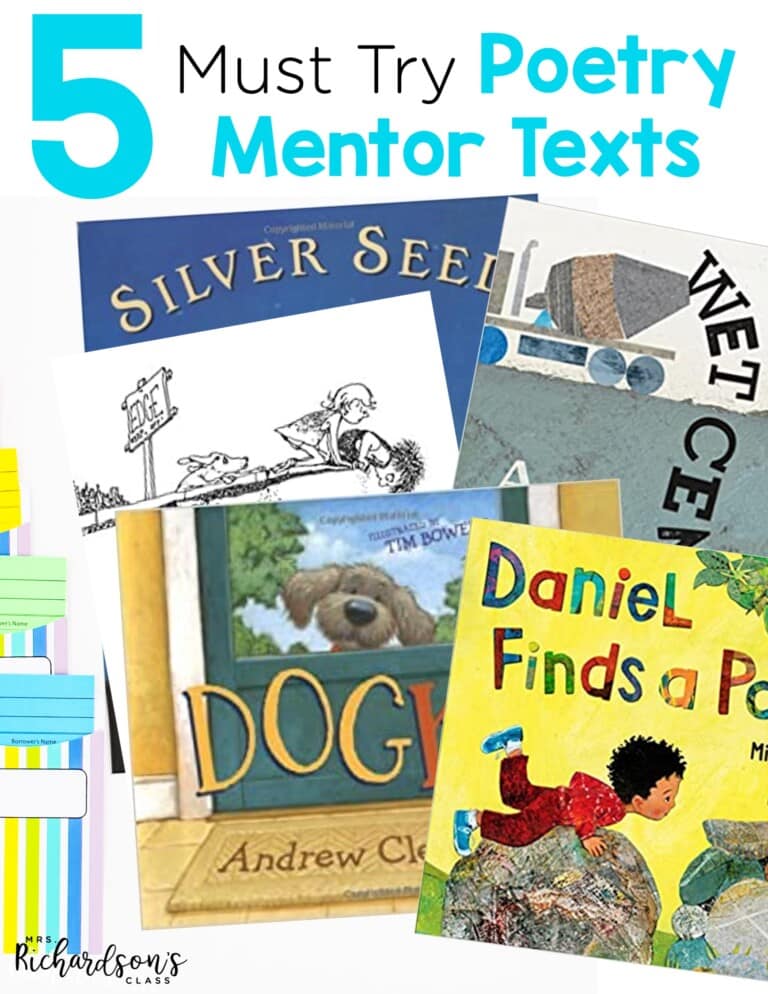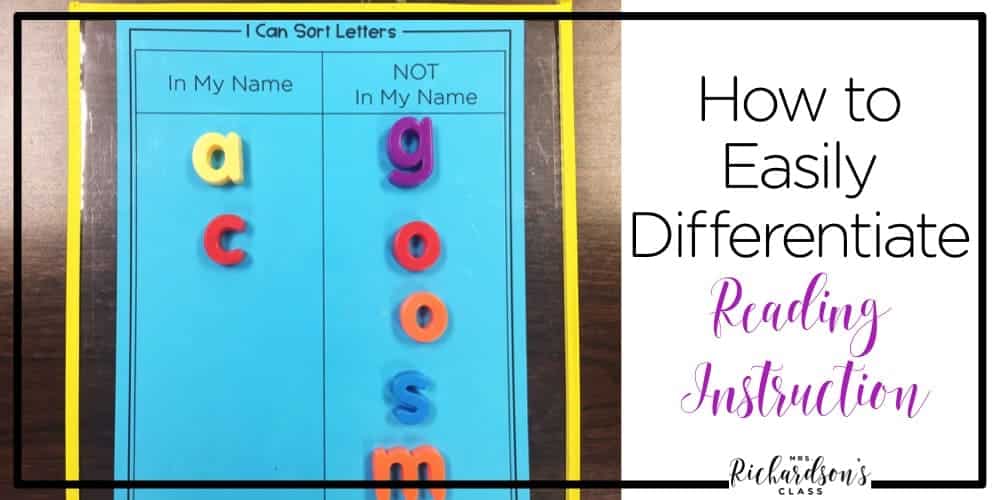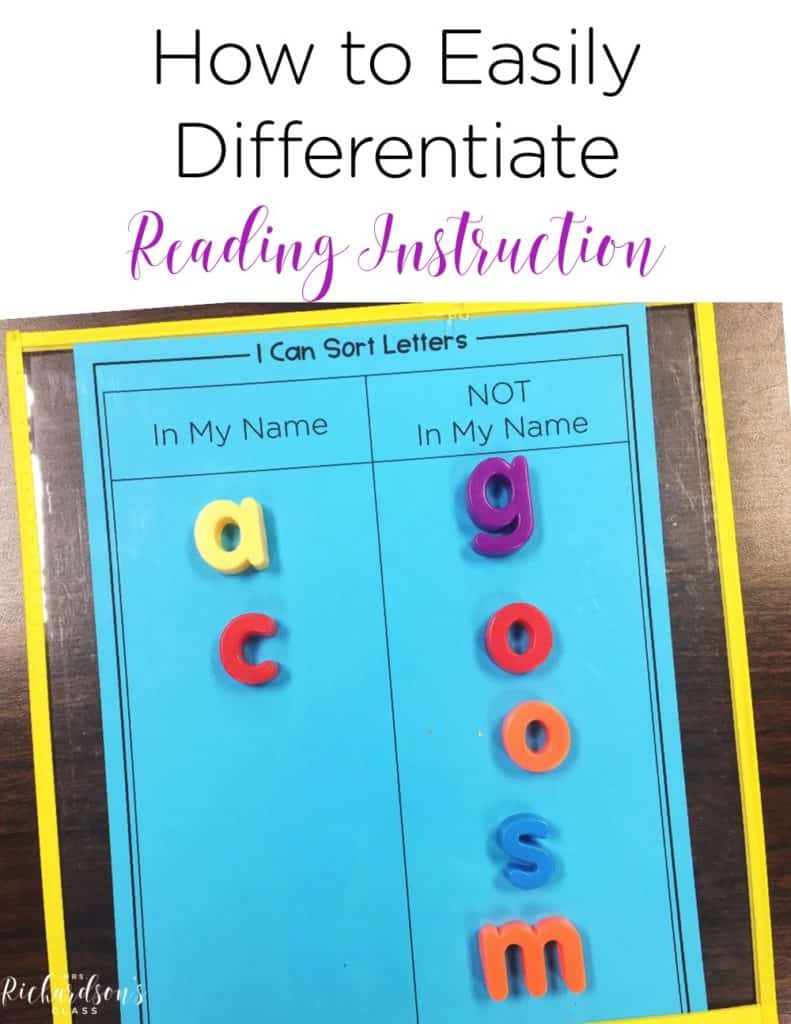


Differentiation. It’s definitely a buzzword in education these days and I think there is a solid reason for that. It works. It’s how we reach ALL students. It’s what is best for students. I’ll never forget in college when I was taught about it. All I could think of was the crazy amount of work that it was going to be for me and that just made my stomach churn.
As my time in the classroom went on, I realized that good teaching strategies and methods made differentiation a walk in the park. Specifically for reading, I found it super simple. Here are some ways that we can differentiate reading instruction in a snap.

Unless you are new around here, then you know how much I love and believe in the power of guided reading. Guided reading naturally differentiates itself because you are being smart about your grouping. You are either grouping them by reading level or by strategies. Remember, groups are flexible. If you take the time to get to know your students and their interests, your instruction during this time is on point and effective. If you choose to use this time to choose books that are on topics that your little readers enjoy, they will be more engaged.
This is an important part of literacy instruction. I have shared before how my first year of teaching I did not do anything even close to word work. I simply wasn’t aware of the power. One of my favorite word study systems is Words Their Way. While yes, it took work to implement and time to train the little learners in how the routine worked in our classroom, I was so grateful that I did because it easily differentiated their instruction. I saw so much growth in their reading and writing from doing differentiated word work.
If you are doing guided reading, then you more than likely are doing literacy stations. Are you doing tons of work or are you letting them naturally differentiate themselves? Are you creating tons of new activities each week and making three different levels? I tried this and it was exhausting. What worked best in our classroom was for me to make sure that my literacy station groups were mixed abilities and that there were a variety of activities for them to do that I had already modeled.
How do you tackle differentiation in your classroom? It’s not always easy, but anyway that differentiation happened naturally was a win for me!


Want to use the latest research to boost your readers during small groups? This FREE guide is packed with engaging ideas to help them grow!

I’m a K-1 teacher who is passionate about making lessons your students love and that are easy to implement for teachers. Helping teachers like you navigate their way through their literacy block brings me great joy. I am a lifelong learner who loves staying on top of current literacy learning and practices. Here, you’ll find the tools you need to move your K-2 students forward!


| Cookie | Duration | Description |
|---|---|---|
| cookielawinfo-checkbox-analytics | 11 months | This cookie is set by GDPR Cookie Consent plugin. The cookie is used to store the user consent for the cookies in the category "Analytics". |
| cookielawinfo-checkbox-functional | 11 months | The cookie is set by GDPR cookie consent to record the user consent for the cookies in the category "Functional". |
| cookielawinfo-checkbox-necessary | 11 months | This cookie is set by GDPR Cookie Consent plugin. The cookies is used to store the user consent for the cookies in the category "Necessary". |
| cookielawinfo-checkbox-others | 11 months | This cookie is set by GDPR Cookie Consent plugin. The cookie is used to store the user consent for the cookies in the category "Other. |
| cookielawinfo-checkbox-performance | 11 months | This cookie is set by GDPR Cookie Consent plugin. The cookie is used to store the user consent for the cookies in the category "Performance". |
| viewed_cookie_policy | 11 months | The cookie is set by the GDPR Cookie Consent plugin and is used to store whether or not user has consented to the use of cookies. It does not store any personal data. |
4 Responses
Thank you!
Thank you for the great ideas!
Thank you! 🙂